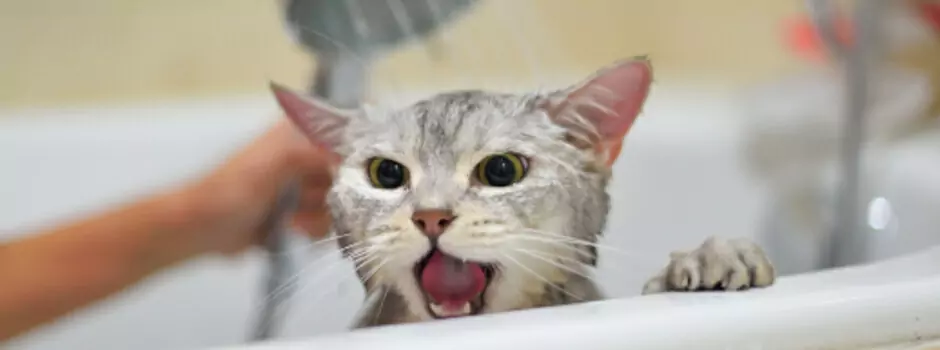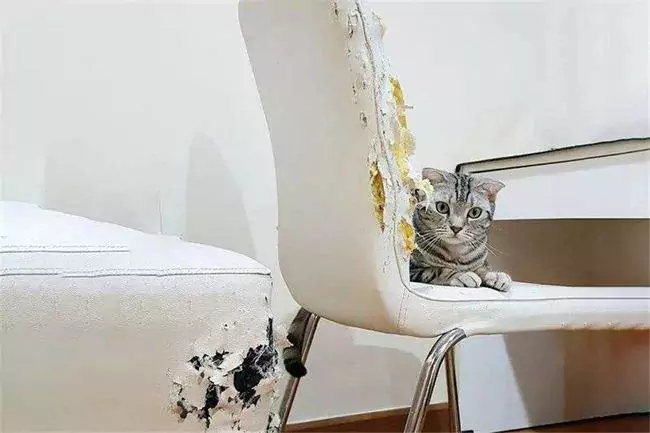How do prevent cats from scratching furniture? How do protect the furniture?
2022-07-08
If your cat also has such behavior, then you must be very helpless, right? With a set of tens of thousands of sofas so easily scratched by cats, the cost of having a cat may not be too much?
If your cat also has these bad behaviors, it's time to stop! Their motive for scratching the furniture is simple, they may just want to mark, they may want to stretch their muscles, or they may just want to sharpen their claws. The furniture placed in your home seems to be the perfect choice for them to both scratch and lie down to stretch their muscles.
To reduce these unnecessary losses, you may need a set of methods to discourage your cat from doing these things. Provide your cat with appropriate scratching supplies, reward good behavior, and begin training your cat. We are confident that your cat will soon give up scratching the furniture.
I. How can I protect the furniture?
If you are worried that your cat's fur will stain the sofa and their claws will scratch the furniture, then you can put a cover on the furniture. For example, put a sofa cover over the sofa. Choose a sofa cover that you can easily remove and throw in the washing machine.
If you think this is too ugly, then you can put a towel in the place where the cat likes to rest or where it likes to stay.
Alternatively, you can buy some "cat repellent spray". "Cat repellent sprays usually contain odors that cats don't like, and they can keep cats away from places they shouldn't go.
You can be assured that regular cat repellent sprays are harmless to cats. There is a downside to this, however, in that cats may go back when the smell is gone.
Perhaps putting tape on the corners of tables and sofa legs where cats like to scratch is also an option. Many cats don't like the feel of duct tape, so when they come in contact with it they will most likely stop scratching. The choice of duct tape is also important; it should not leave a sticky residue on the furniture.
There is another method that may scare your cat, but it is sometimes worth a try. You can put balloons on the area where your cat likes to scratch, and when the cat goes to scratch, the sound of the balloons breaking may scare the cat away. The cat will associate the scratching behavior in the area with the scary sound of the balloon, and it may be less inclined to scratch again.
A simpler way is to trim the cat's nails regularly. If the cat's nails are not too sharp, it will be much less destructive to the furniture. Many pooper scoopers are afraid to cut their cat's nails, so they can take it to the pet store regularly for a trim.

II. Learn to understand and guide your cat's scratching behavior
As we mentioned above, cats' scratching behavior is usually caused by their need to exercise their limb muscles, wear out their sharp claws and release their energy. In addition, cats can leave some scents on the furniture when they scratch, and these scents are important for cats to distinguish their territories.
Once the cat appears to destroy the furniture, I hope you as a pooper scooper have more understanding and tolerance, you need to know that a good relationship is a key to solving the problem. Don't punish the cat directly, it's hard for a cat to learn to do the right thing from punishment. Training and positive guidance is the right way to correct wrong behavior.
There should be at least one item in the home that can be used to sharpen the cat's claws, like a cat scratching board or a cat climbing frame. If these items are not available, then you cannot blame the cat for using furniture to sharpen its claws.
And there are some things you need to consider when you are ready to purchase claw sharpening supplies because a proper claw sharpening supply determines whether the cat will use it or not.
When buying a cat climbing frame, you need to consider its stability of the cat climbing frame. The cat climbing frame will not wobble when the cat stands up to use it.
The cat climbing frame should not be too heavy, and a slightly lighter cat climbing frame will not cause too much damage if the cat climbing frame falls over accidentally, even if it hits the cat.
Cat scratching boards and cat climbing frames are available in different sizes. It is good to have more than 2 different sizes of claw sharpening supplies so that the cat can make its own choice.
Some cats like to scratch the carpet in your home, so depending on their preference, it may be necessary to have a horizontally oriented cat scratching board.
It is best to avoid products made of plush when choosing. Plush is very easy for cats to scratch and fall all over the house. Sometimes cats can also accidentally eat the lint, which can be dangerous. Supplies made of sisal cloth may be better.
The position of the scratching board and cat climbing frame is also important. If the cat particularly likes to scratch the sofa, then put the cat climbing frame next to the sofa, and if the cat particularly likes a certain spot on the carpet, then put the cat scratching board in that place.
If the cat leaves scratch marks in many places, then prepare more cat scratching boards so that the cat has more chances to use them. In addition, put some small snacks on the scratching board or sprinkle some catnip, all of these methods can increase the appeal of claw sharpening supplies to your cart.
The next step may be to train your cat, some cats need guidance before they will use the cat climbing frame. You can gently pick your cat up and place it on the cat climbing frame and wait for them to explore on their own. When they do the right behavior, pet it gently to give it an encouraging signal.
Each time you see it using the cat scratching board or cat climbing frame, you can gently pat it to encourage it.
Perhaps you have seen people say that you can teach a cat to do things by grabbing its paw and gently moving it back and forth on the cat scratching board. However, you should know that cats are creatures that hate to be forced to do something, and this may bring a bad negative impression to the cat. If it associates the scratch pad with negativity, then it may never want to use it again.
III. Stop the cat's bad scratching behavior
Influencing the cat's behavior through a different tone of voice is one way to try. When a cat approaches a piece of furniture and tries to scratch it with its claws, you can say "No!" in a high-pitched voice. . This will reduce the frequency of the cat scratching the furniture. But there is also a disadvantage that the cat may not do this when you are home, and when he is home alone, he may start scratching the furniture again.
Another way to stop them from scratching is to have a water pistol or a small stone. When the cat does something wrong, bear water to it or throw a stone at it. This way the cat will associate scratching with these sudden scares. But don't let the cat see you throwing the stone or baring the water, don't let it associate these scares with you.
And when your cat starts using the cat scratch pad or cat climbing frame, promptly pet them and give them treats as a reward so that they associate the cat climbing frame with all the pleasant things.
You can also take a teasing stick to distract them and draw your cat near the cat climbing frame or cat scratching board with the stick. To prevent your cat from scratching the furniture, place a cat climbing frame or cat scratching board in an area where cats often sharpen their claws and sprinkle some catnip on the board to make it more attractive. Discourage the cat's bad behavior by "negative association" and then use positive guidance to encourage the cat to use the cat climbing frame. I hope every cat can understand not to scratch things, after all, it is not easy for everyone to earn money.
Was this article helpful to you?
Other links in this article
português (Brasil):
Como evitar que os gatos arranhem os móveis? Como proteger os móveis?
中文简体:
如何防止猫抓家具?如何保护好家具?
中文繁体:
如何防止貓抓家具?如何保護好家具?










